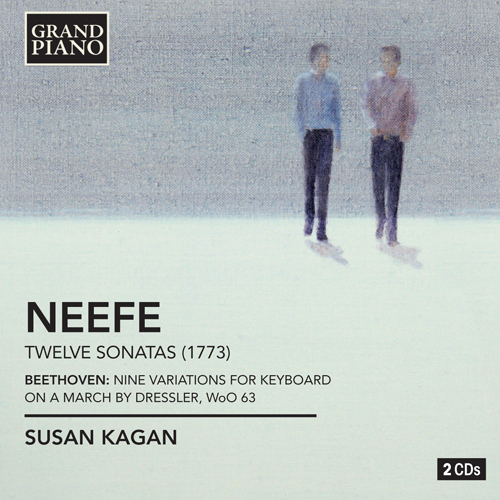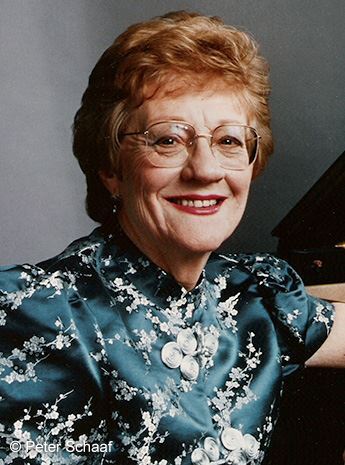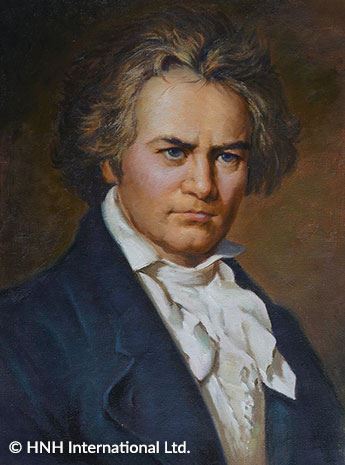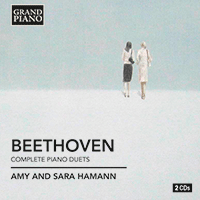
About this Release
“My interest in C. G. Neefe, Beethoven's first important and influential teacher in his home city of Bonn, Germany, arose from my earlier research into the music of Beethoven's two composition students, Archduke Rudolph and Ferdinand Ries. A new modern edition of the keyboard sonatas allowed me to study them and from that came the determination to record them. These sonatas are an important link between the styles of the Baroque and Early Classical periods, and in addition, round out the picture of Beethoven as student as well as teacher. The inclusion of Beethoven's "Dressler" Variations, his first published composition written at the age of 12 under Neefe's tutelage, seemed an appropriate addition to the recording.” — Susan Kagan
NEEFE, CHRISTIAN GOTTLOB (1748–1798)
Twelve Sonatas (1773)
Beethoven: Nine Variations for Keyboard on a March by Dressler, WoO 63
- Susan Kagan, piano
Christian Gottlob Neefe flourished as the Baroque was giving way to the Classical period. These Twelve Sonatas represent important steps in this transition, each having a uniquely individual character and showing a mixture of styles. Neefe is remembered today as Beethoven’s first main teacher in Bonn, the Dressler Variations being young Ludwig’s first published composition.
This recording was made on a modern instrument: Hamburg Steinway CD147
Tracklist
|
Neefe, Christian Gottlob
|
|
12 Keyboard Sonatas (1773): Sonata No. 1 in D Minor (1773) (00:10:46 )
|
|
1
I. Allegro con spirito (00:03:50)
|
|
2
II. Poco adagio (00:03:58)
|
|
3
III. Allegretto (00:02:55)
|
|
12 Keyboard Sonatas (1773): Sonata No. 2 in D Major (1773) (00:06:45 )
|
|
4
I. Allegretto grazioso (00:04:03)
|
|
5
II. Tempo di minuetto (00:02:41)
|
|
12 Keyboard Sonatas (1773): Sonata No. 3 in G Major (1773) (00:09:25 )
|
|
6
I. Vivace (00:04:04)
|
|
7
II. Andante con tenerezza (00:02:56)
|
|
8
III. Allegro assai (00:02:25)
|
|
12 Keyboard Sonatas (1773): Sonata No. 4 in C Minor (1773) (00:07:37 )
|
|
9
I. Allegro (00:03:39)
|
|
10
II. Andante con gusto (00:01:33)
|
|
11
III. Presto (00:02:24)
|
|
12 Keyboard Sonatas (1773): Sonata No. 5 in C Major (1773) (00:11:31 )
|
|
12
I. Allegro moderato (00:05:41)
|
|
13
II. Largo e mesto (00:04:04)
|
|
14
III. Allegro e scherzando (00:01:43)
|
|
12 Keyboard Sonatas (1773): Sonata No. 6 in F Major (1773) (00:11:04 )
|
|
15
I. Poco lento e languido (00:08:00)
|
|
16
II. Tempo di minuetto (00:03:03)
|
|
12 Keyboard Sonatas (1773): Sonata No. 7 in B-Flat Major (1773) (00:11:30 )
|
|
17
I. Allegro (00:04:43)
|
|
18
II. Arioso ed un poco sostenuto (00:03:05)
|
|
19
III. Molto presto (00:03:47)
|
|
12 Keyboard Sonatas (1773): Sonata No. 8 in E-Flat Major (1773) (00:09:56 )
|
|
1
I. Allegretto e cantabile (00:04:58)
|
|
2
II. Poco largo (00:02:59)
|
|
3
III. Presto (00:01:58)
|
|
12 Keyboard Sonatas (1773): Sonata No. 9 in C Minor (1773) (00:09:01 )
|
|
4
I. Moderato (00:04:24)
|
|
5
II. Minuetto (00:03:01)
|
|
6
III. Polacca (00:01:33)
|
|
12 Keyboard Sonatas: Sonata No. 10 in C Major (1773) (00:06:31 )
|
|
7
I. Con gusto (00:03:40)
|
|
8
II. Minuetto (00:01:20)
|
|
9
III. Rondeau (00:01:30)
|
|
12 Keyboard Sonatas (1773): Sonata No. 11 in D Major (1773) (00:08:04 )
|
|
10
I. Allegro con spirito (00:03:21)
|
|
11
II. Andante con gravita (00:02:12)
|
|
12
III. Minuetto (00:02:30)
|
|
12 Keyboard Sonatas (1773): Sonata No. 12 in A Major (1773) (00:08:59 )
|
|
13
I. Tempo giusto (00:02:53)
|
|
14
II. Minuetto (00:03:58)
|
|
15
III. Alla Polacca (00:02:05)
|
|
Beethoven, Ludwig van
|
|
16
9 Variations on a March by Dressler, WoO 63 (1782) (00:15:37)
|
The Artist(s)

Susan Kagan, a pianist, author, and educator, has explored the music of composers associated with Beethoven and his milieu. She holds a Ph.D. from the Graduate Center of the City University of New York; her dissertation on the music of Archduke Rudolph, Beethoven’s composition student for more than two decades, was published by Pendragon Press in 1988.
The Composer(s)
 Beethoven did much to enlarge the possibilities of music and widen the horizons of later generations of composers.
Beethoven did much to enlarge the possibilities of music and widen the horizons of later generations of composers.  Christian Gottlob Neefe, born in 1748, is remembered today mainly as Beethoven’s first important teacher in Bonn. Neefe (pronounced Nay-fuh) was a respected and successful musician of his time: Court Organist and Kapellmeister of the Electoral Court Orchestra in Bonn, music director of a prominent theatre group, composer of numerous Singspiele (operettas) and other works, and music teacher. He became Beethoven’s teacher around 1780, in piano, organ, thoroughbass, and composition. A great admirer of the Bach family, he introduced Beethoven to the Well-Tempered Clavier of JS Bach, and the music and writings of Bach’s distinguished son, Carl Phillip Emanuel Bach. In addition, Neefe was a sympathetic and fatherly friend to the young Beethoven, who later wrote to him: “I thank you for the counsel which you gave me so often…If I ever become a great man yours shall be a share of the credit.”
Christian Gottlob Neefe, born in 1748, is remembered today mainly as Beethoven’s first important teacher in Bonn. Neefe (pronounced Nay-fuh) was a respected and successful musician of his time: Court Organist and Kapellmeister of the Electoral Court Orchestra in Bonn, music director of a prominent theatre group, composer of numerous Singspiele (operettas) and other works, and music teacher. He became Beethoven’s teacher around 1780, in piano, organ, thoroughbass, and composition. A great admirer of the Bach family, he introduced Beethoven to the Well-Tempered Clavier of JS Bach, and the music and writings of Bach’s distinguished son, Carl Phillip Emanuel Bach. In addition, Neefe was a sympathetic and fatherly friend to the young Beethoven, who later wrote to him: “I thank you for the counsel which you gave me so often…If I ever become a great man yours shall be a share of the credit.” Reviews
“Kagan succeeds admirably at bringing this music to life, and if there is any moment on this recording where her pianism is less than sparkling, stylish, and engaging, I must have missed it.” – Fanfare
“Kagan’s warm sonority receives beautiful reproduction in one of the best-engineered piano releases I’ve heard originating from Joseph Patrych’s Sound Studio.” – Gramophone
“Kagan is an exemplary performer of the lesser music of this era, which she handles judiciously, not blowing it out of proportion but also not minimizing it or making it sound trivial by comparison with the works of greater composers of the time.” – Infodad.com


 Grand Piano has gained a reputation for producing high quality recordings of rare keyboard gems. Dedicated to the exploration of undiscovered piano repertoire, the label specialises in complete cycles of piano works by many lesser-known composers, whose output might otherwise have remained unknown and unrecorded.
Grand Piano has gained a reputation for producing high quality recordings of rare keyboard gems. Dedicated to the exploration of undiscovered piano repertoire, the label specialises in complete cycles of piano works by many lesser-known composers, whose output might otherwise have remained unknown and unrecorded.






